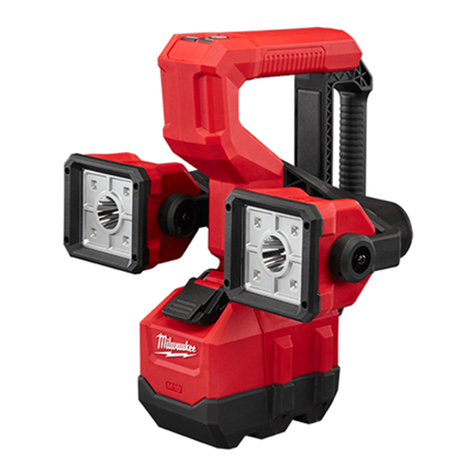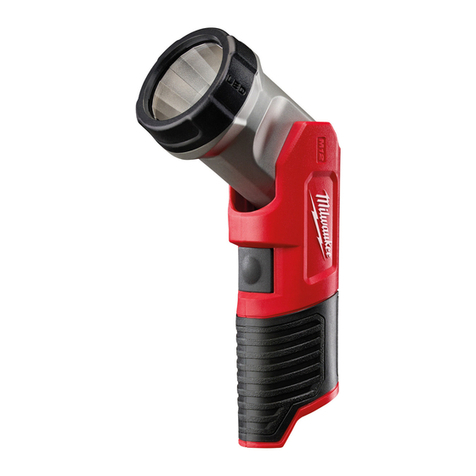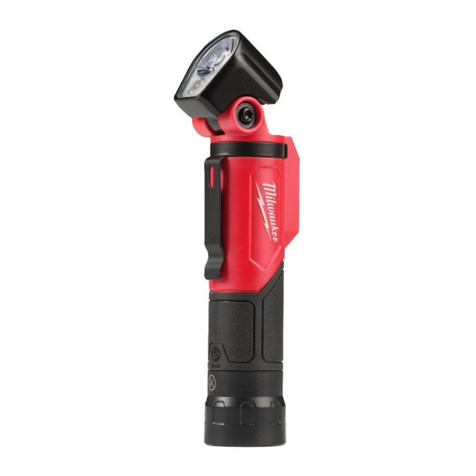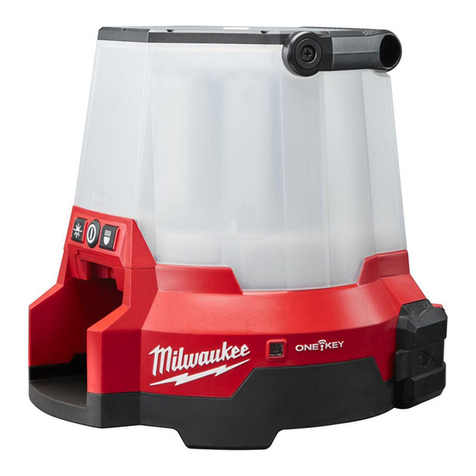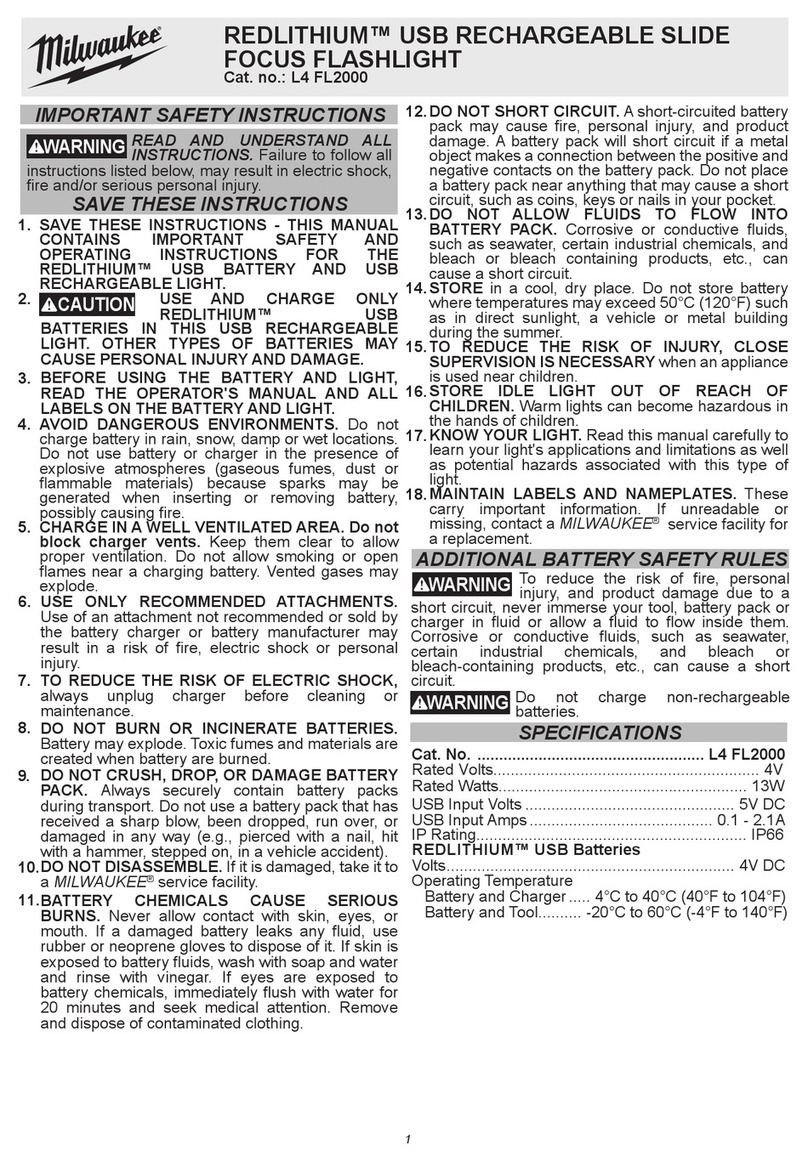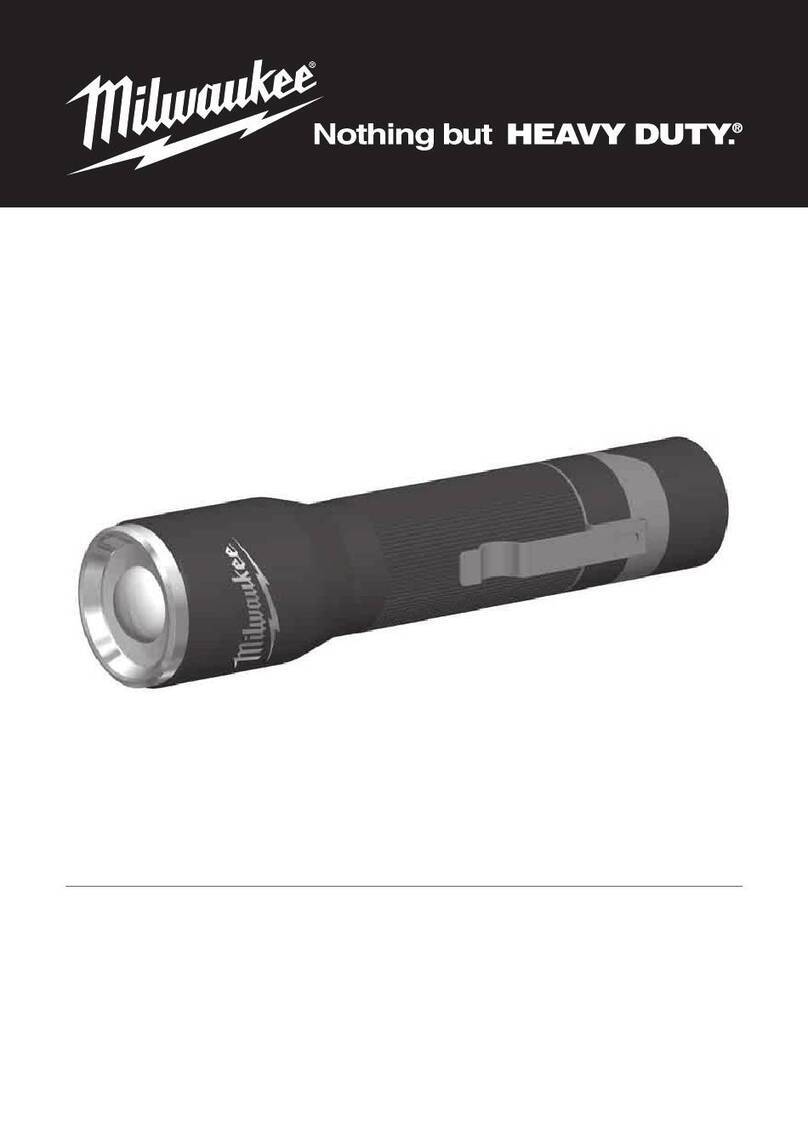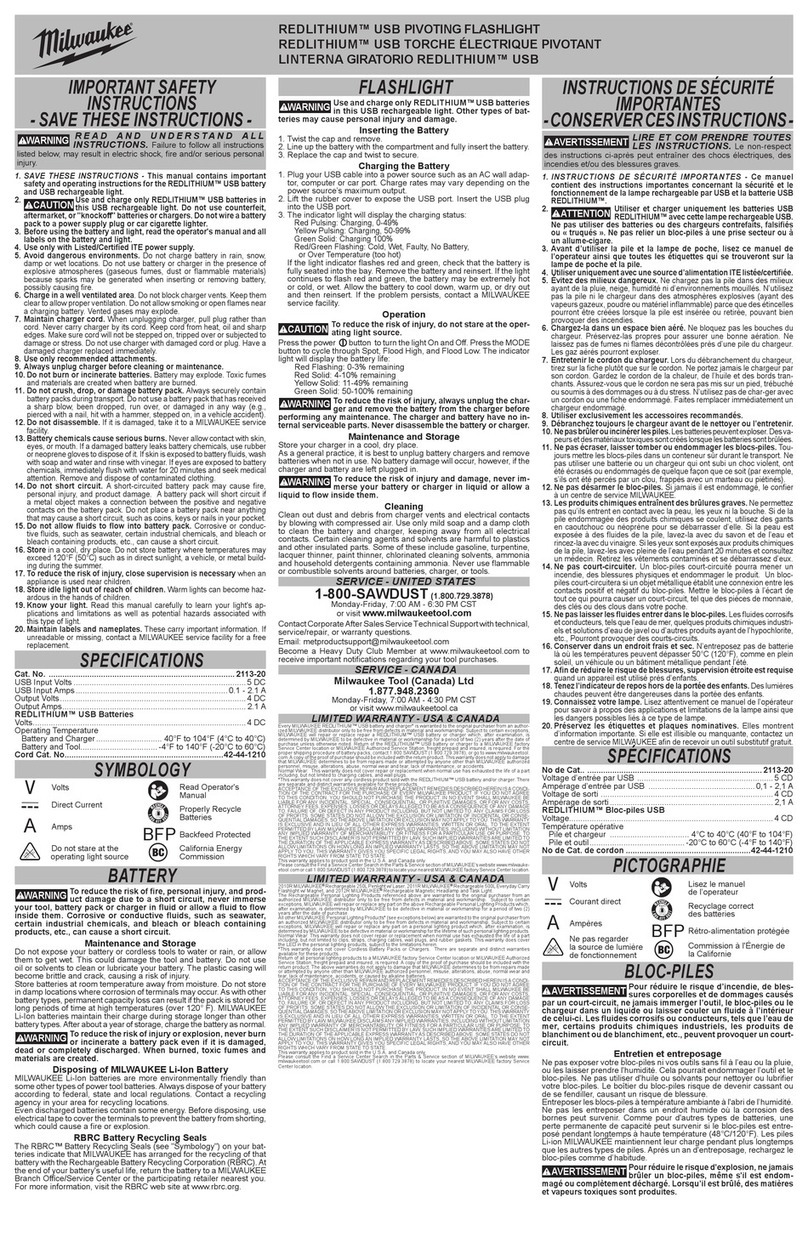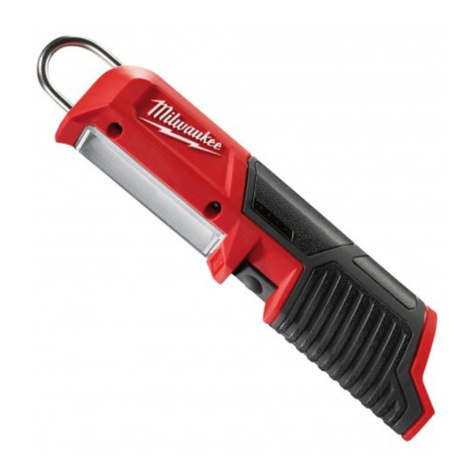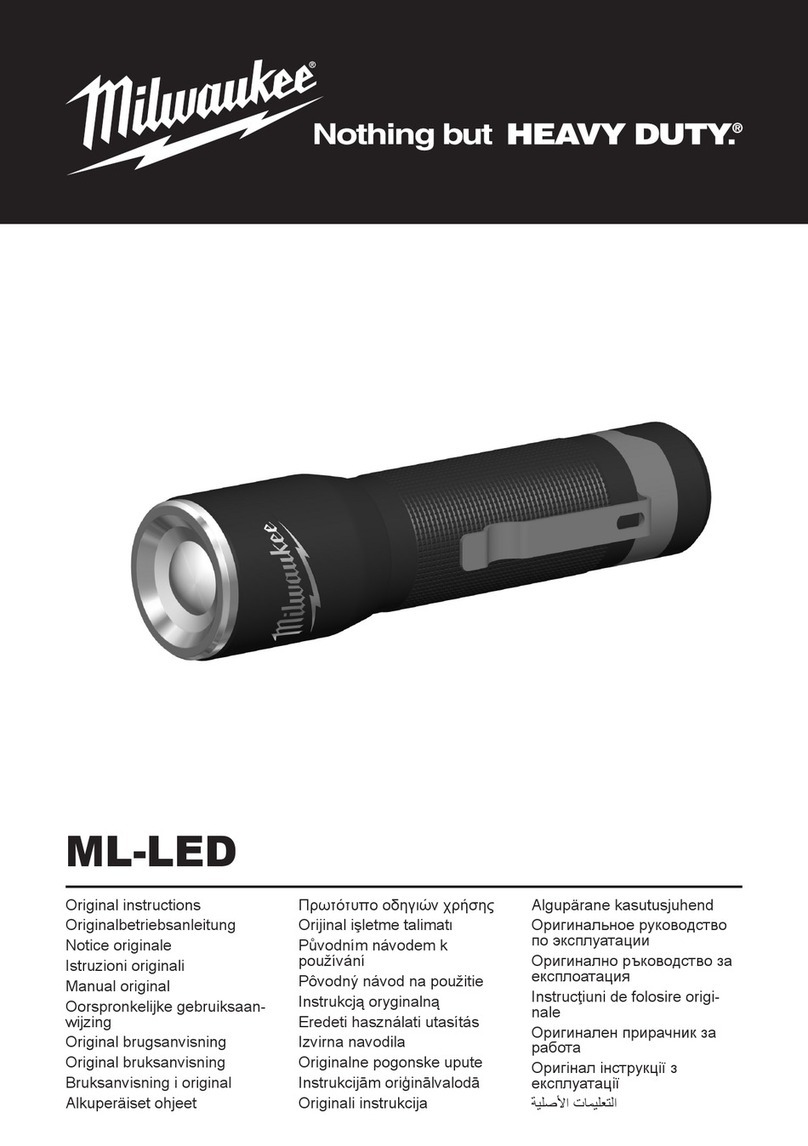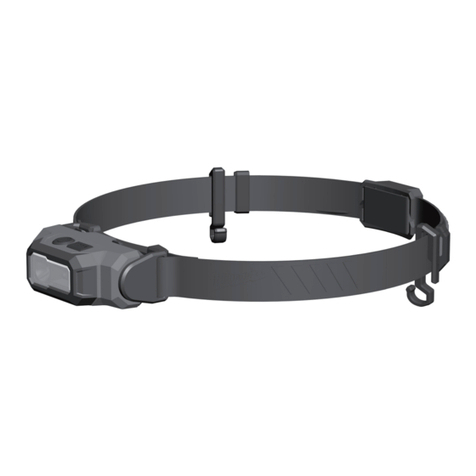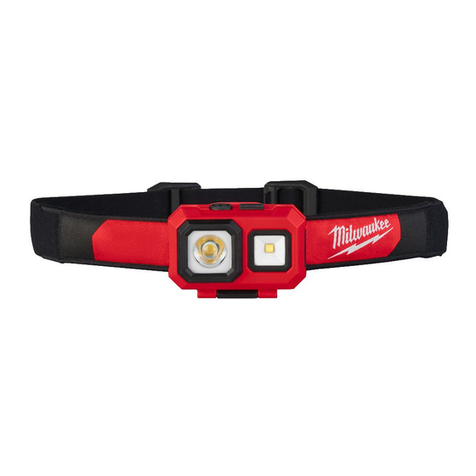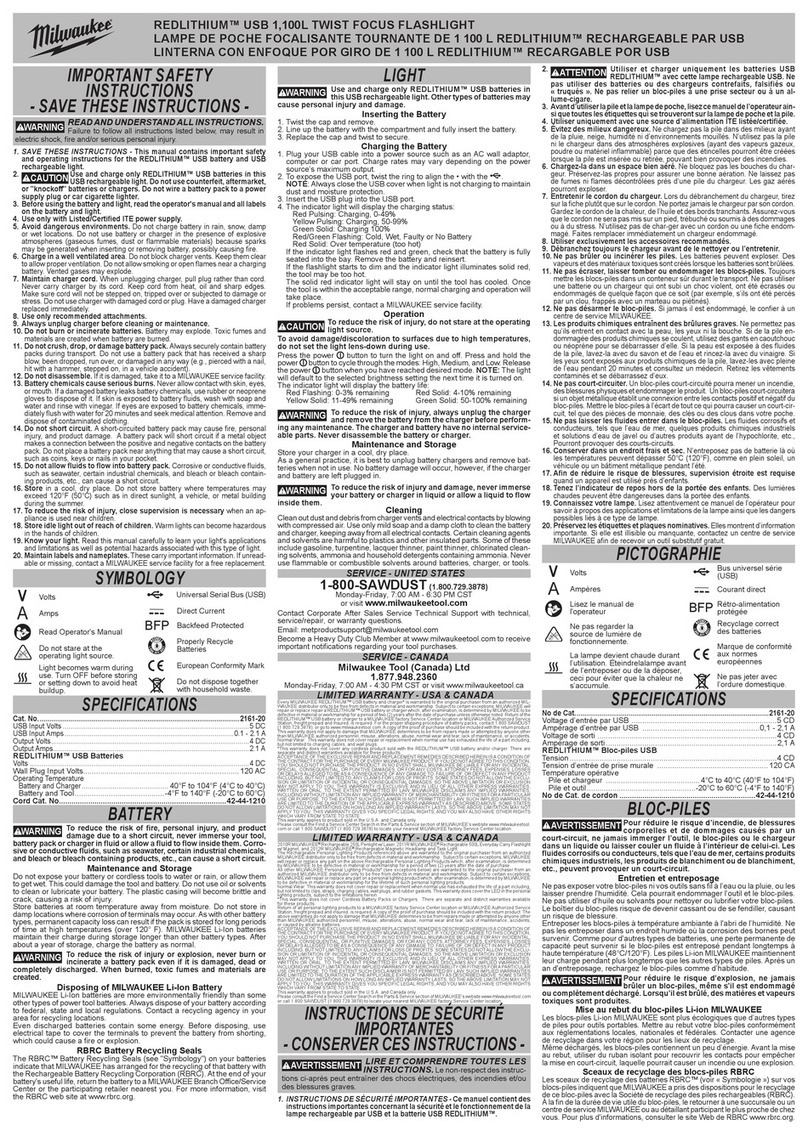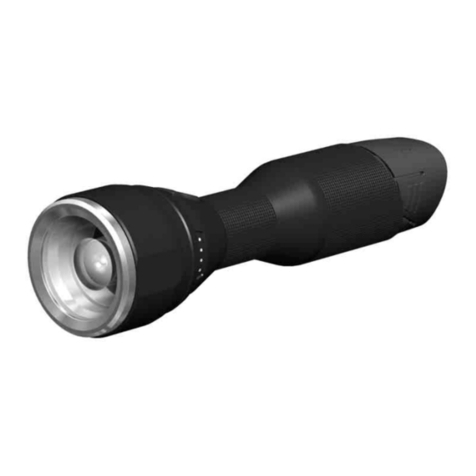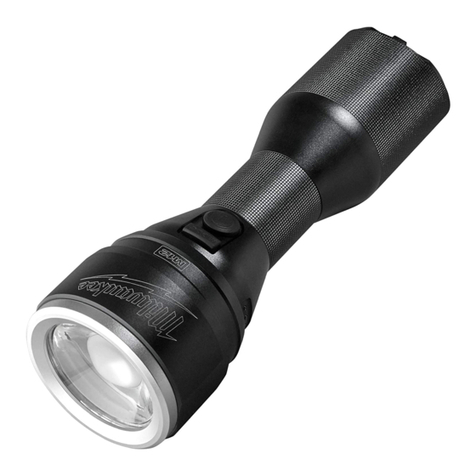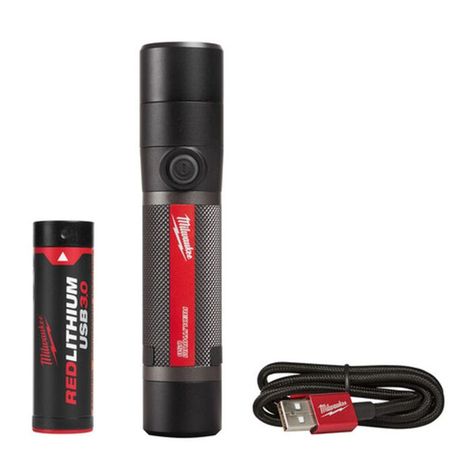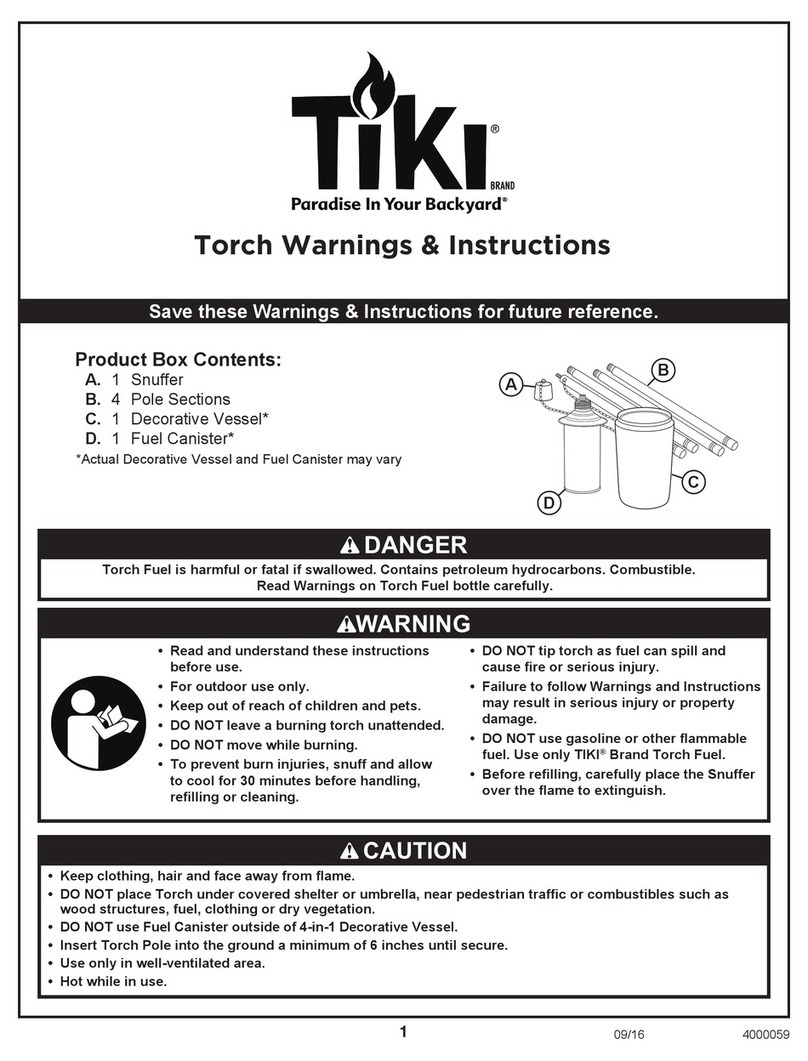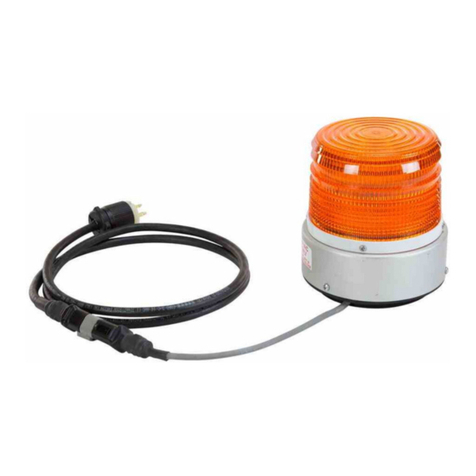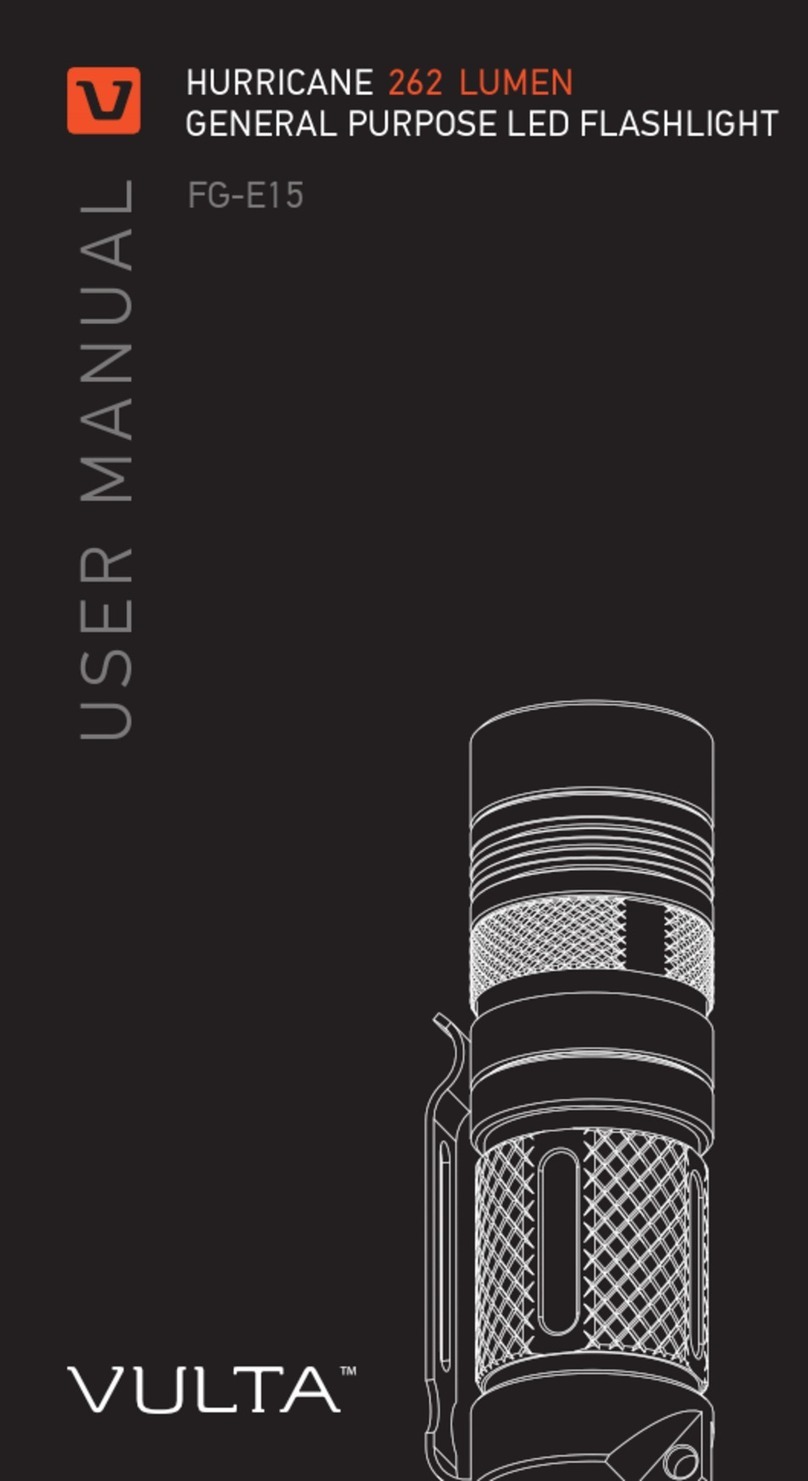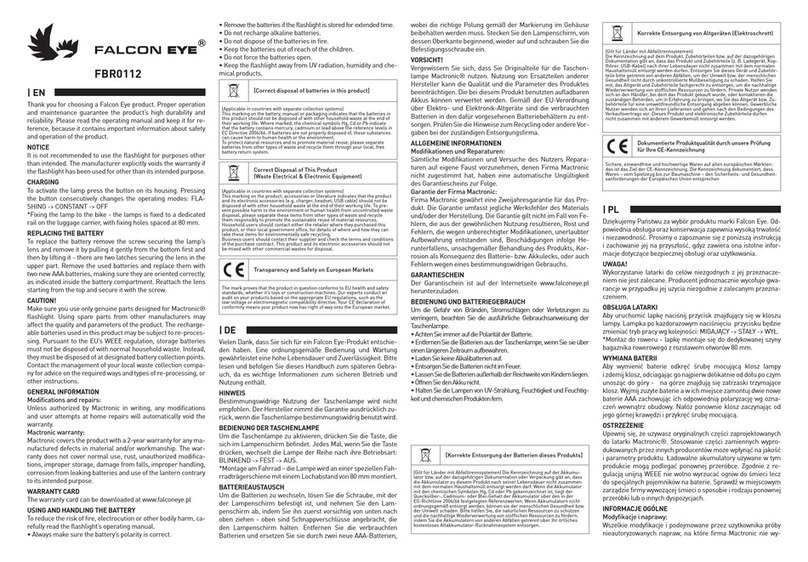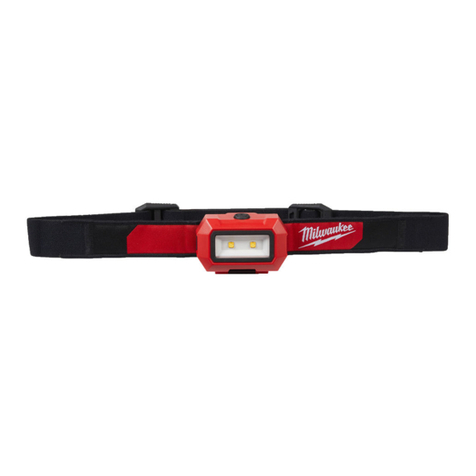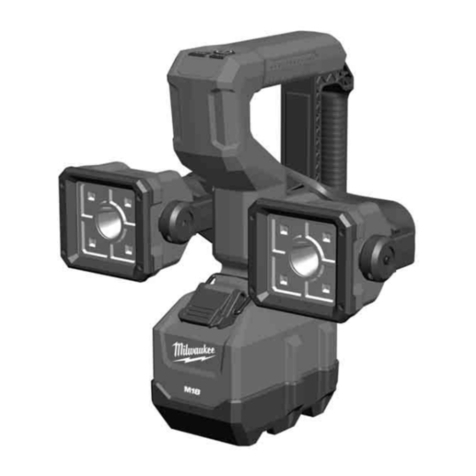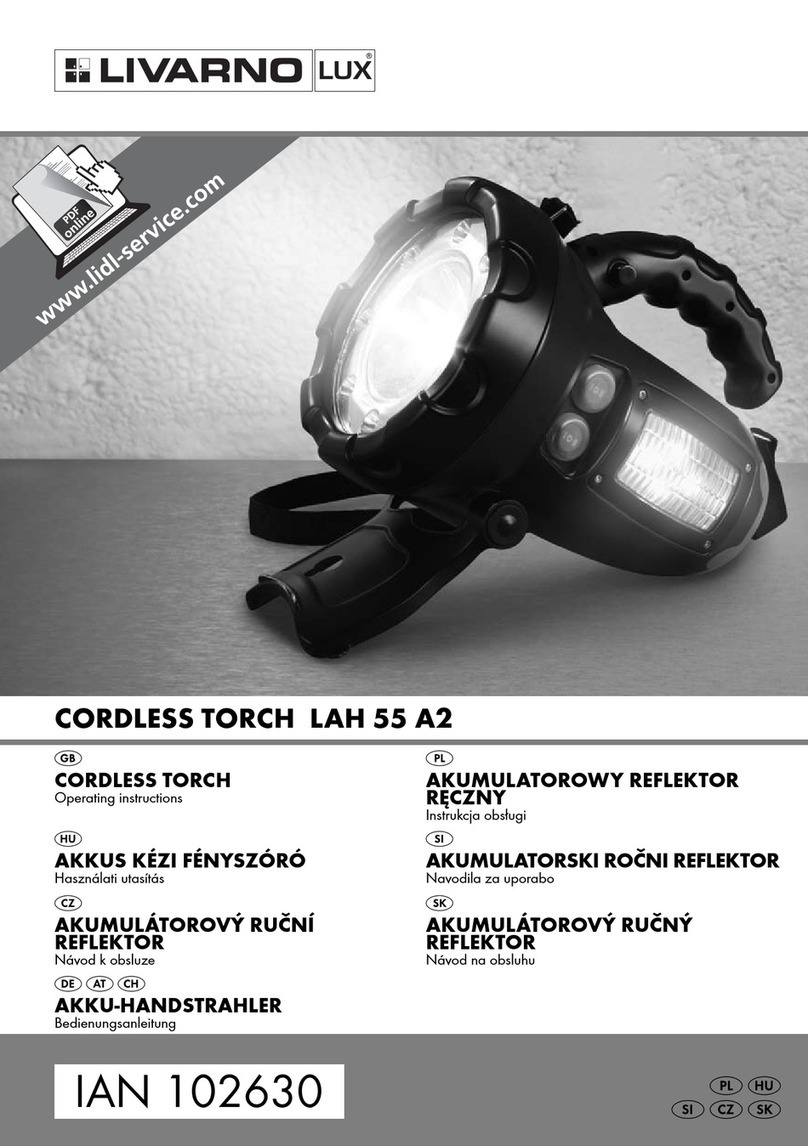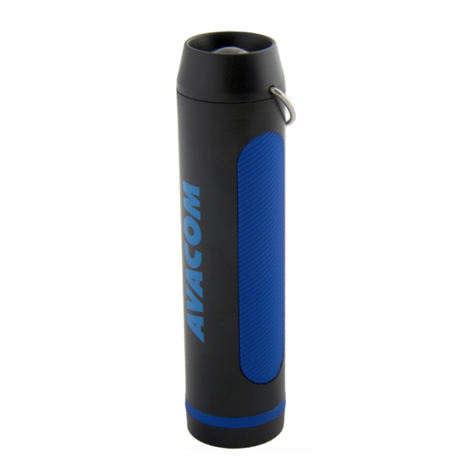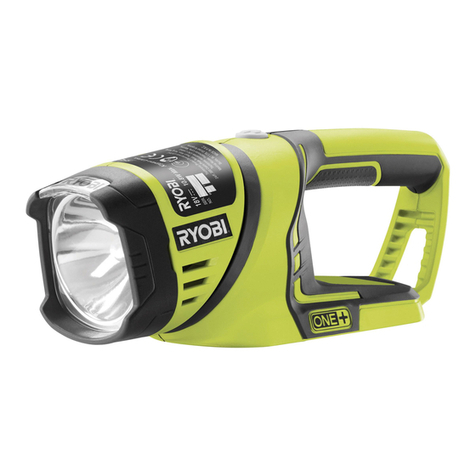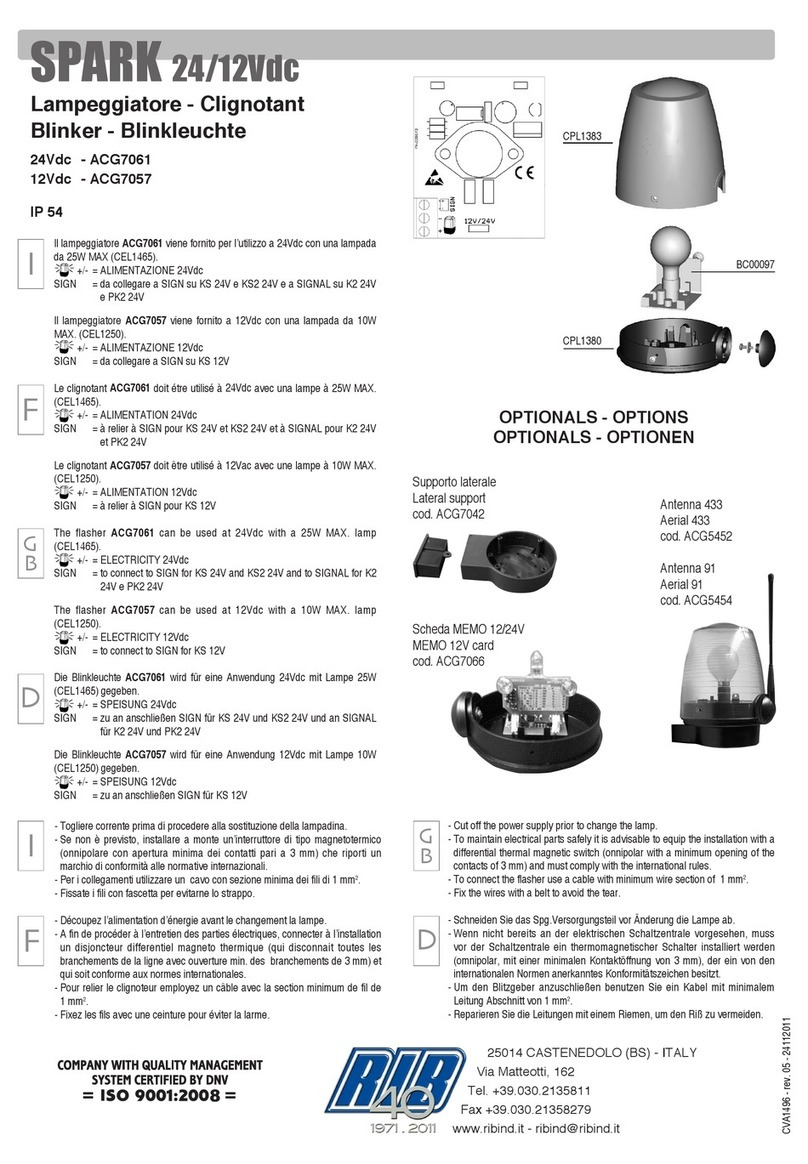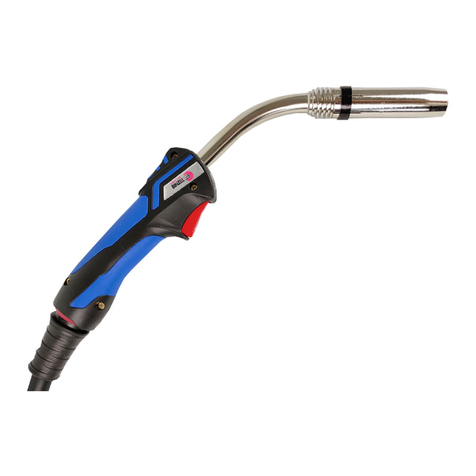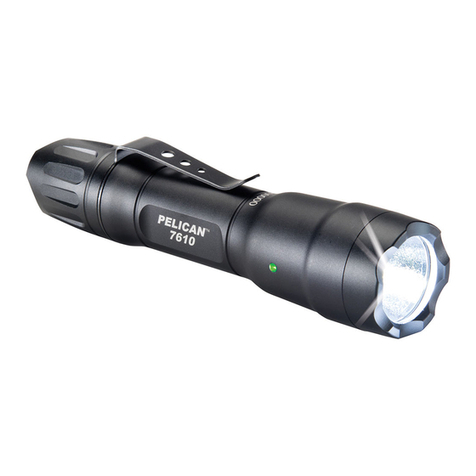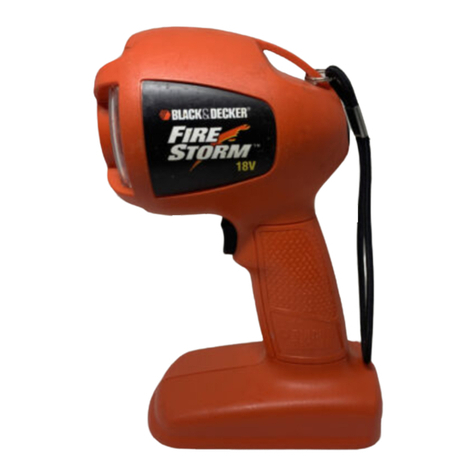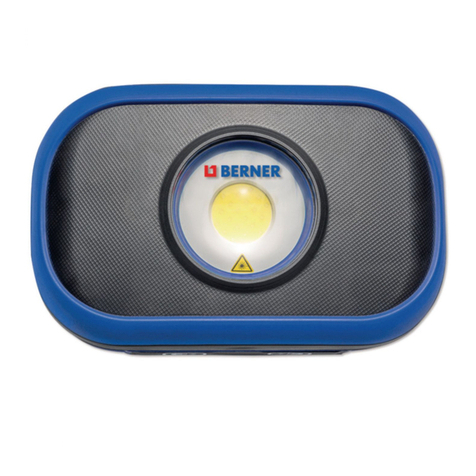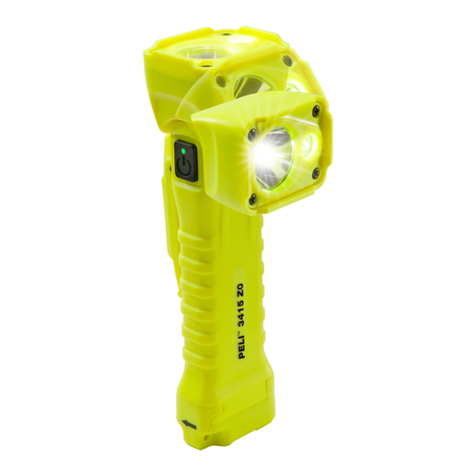READ AND UNDERSTAND ALL INSTRUC-
TIONS. Failure to follow all instructions listed below,
may result in electric shock, fire and/or serious personal injur .
SAVE THESE INSTRUCTIONS
1. SAVE THESE INSTRUCTIONS - THIS MANUAL CONTAINS IM-
PORTANT SAFETY AND OPERATING INSTRUCTIONS FOR THE
REDLITHIUM
®
USB BATTERY CAT. NO. 48-11-2130 AND USB RE-
CHARGEABLE LIGHT.
2. USEANDCHARGE ONLY REDLITHIUM
®
USB BATTERIES INTHIS USB
RECHARGEABLELIGHT. OTHER TYPESOF BATTERIES MAY CAUSE
PERSONAL INJURY AND DAMAGE.
3. BEFORE USING THE BATTERYAND LIGHT, READ THIS OPERATOR’S
MANUAL AND ALL LABELS ON THE BATTERYAND LIGHT.
4. USE ONLY WITH LISTED/CERTIFIED ITE POWER SUPPLY. Others may
result in a risk of fire, electric shock or personal injur .
5. AVOID DANGEROUS ENVIRONMENTS. Do not charge battery in rain,
snow, damp or wet locations. Do not use battery or charger in the presence
of explosive atmospheres (gaseous fumes, dust or flammable materials)
because sparks may be generated when inserting or removing battery,
possibly causing fire
6. CHARGE IN A WELL VENTILATED AREA. Do not block charger vents.
Keep them clear to allow proper ventilation. Do not allow smoking or open
flames near a charging batter . Vented gases may explode.
7. MAINTAIN CORD. When unplugging charger, pull plug rather than cord
to reduce the risk of damage to the electrical plug and cord. Never carry
charger by its cord. Keep cord from heat, oil and sharp edges. Make sure
cord will not be stepped on, tripped over or subjected to damage or stress.
Do not use charger with damaged cord or plug. Have a damaged charger
replaced immediately.
8. USE ONLY RECOMMENDED ATTACHMENTS. Use of an attachment not
recommended or sold by the battery charger or battery manufacturer may
result in a risk of fire, electric shock or personal injur .
9. TO REDUCE THE RISK OF ELECTRIC SHOCK, always unplug charger
before cleaning or maintenance.
10. DO NOT BURN OR INCINERATE BATTERY PACKS. Battery may ex-
plode, causing personal injury or damage. Toxic fumes and materials are
created when battery are burned.
11. DO NOT CRUSH, DROP, OR DAMAGE battery. Do not use a battery or
charger that has received a sharp blow, been dropped, run over, or dam-
aged in any way (e.g., pierced with a nail, hit with a hammer, stepped on).
12. DO NOT DISASSEMBLE. Incorrect reassembly may result in the risk of
electric shock, fire or exposure to battery chemicals. If it is damaged, take
it to a MILWAUKEE service facility.
13. BATTERYCHEMICALSCAUSE SERIOUSBURNS. Never allow contact
with skin, eyes, or mouth. If a damaged battery leaks battery chemicals,
use rubber or neoprene gloves to dispose of it. If skin is exposed to bat-
tery fluids, wash with soap and water and rinse with vinegar. If eyes are
exposed to battery chemicals, immediately flush with water for 20 minutes
and seek medical attention. Remove and dispose of contaminated clothing.
14. DO NOT SHORT CIRCUIT. A battery will short circuit if a metal object
makes a connection between the positive and negative contacts on the
battery pack. Do not place a battery pack near anything that may cause a
short circuit, such as coins, keys or nails in your pocket. A short circuited
battery may cause fire and personal injur .
15. STORE in a cool, dry place. Do not store battery where temperatures may
exceed 120°F (50°C) such as in direct sunlight, a vehicle or metal building
during the summer.
16. TOREDUCE THERISK OFINJURY, CLOSESUPERVISIONIS NECES-
SARY when an appliance is used near children.
17. STORE IDLE LIGHT OUT OF REACH OF CHILDREN. Warm lights can
become hazardous in the hands of children.
18. KNOW YOUR LIGHT. Read this manual carefully to learn your light's
applications and limitations as well as potential hazards associated with
this type of light.
19. MAINTAIN LABELSAND NAMEPLATES. These carry important informa-
tion. If unreadable or missing, contact a MILWAUKEE service facility for
a free replacement.
READ AND SAVE ALL
INSTRUCTIONS FOR
FUTURE REFERENCE.
USB RECHARGEABLE 700L FLASHLIGHT
USB RECHARGEABLE
700L FLASHLIGHT
WARNING
this
Use and
USB rech
charge only
argeable light
REDLITHIUM
. Oth ®
er typ
USB
es o
f bat
batteries in
teries
may cause personal injury and damage.
Inserting the Battery
1. Unscrew the back cap and remove the battery cradle.
2. Line up the arrow on the battery with the arrow in the compartment and
fully insert the battery.
3. Insert the battery/cradle into the flashlight and screw on the back cap securely.
Charging the Battery
1. Plug your USB cable into a power source such as an AC wall adaptor,
computer or car port.
2. Twist the cap to expose the micro USB port. Insert the micro USB plug
into the micro USB port.
3. The indicator light will display the charging status:
Red Flashing: Charging, 0-25% charged
Orange Flashing: Charging, 25-80% charged
Green Flashing: Charging, 80-99% charged
Green Solid: 99-100% Charged
Red/Green Flashing: Damaged or Faulty Battery
If the light indicator flashes red and green, check that the battery is
fully seated into the bay. Remove the battery and reinsert. If the light
continues to flash red and green, the battery may be extremely hot or
cold, or wet. Allow the battery to cool down, warm up, or dry out and then
reinsert. If the problem persists, contact a MILWAUKEE service facility.
Operation
WARNING
To reduce the risk of injury, do not look directly into
the light when the light is on.
The Flashlight has a dual function power button . Press the button firml
(click) to turn the light on or off, or select the mode. Press the button softly
to use the momentary on, or cycle through the modes. Each time the button
is pressed softly in under 1 second, the mode will change between High,
Low and Strobe. To lock in the mode, press the power button firmly (click).
To adjust the focus, slide the light head in and out.
The fuel gauge will display the battery life:
Red Flashing: 0-10% remaining
Red Solid: 10-25% remaining
Orange Solid: 25-80% remaining
Green Solid: 80-100% remaining
WARNING
To reduce the risk of injury, always unplug the
charger and remove the battery from the charger
before performing any maintenance. The charger and battery have
no internal serviceable parts. Never disassemble the battery or
charger. Maintenance and Storage
Store your charger in a cool, dry place.
As a general practice, it is best to unplug battery chargers and remove
batteries when not in use. No battery damage will occur, however, if the
charger and battery are left plugged in.
WARNING
Toreduce therisk ofinjuryand damage,never immerse
your battery or charger in liquid or allow a liquid to
ow inside them.
Cleaning
Clean out dust and debris from charger vents and electrical contacts by
blowing with compressed air. Use only mild soap and a damp cloth to clean
the battery and charger, keeping away from all electrical contacts. Certain
cleaning agents and solvents are harmful to plastics and other insulated
parts. Some of these include gasoline, turpentine, lacquer thinner, paint
thinner, chlorinated cleaning solvents, ammonia and household detergents
containing ammonia. Never use flammable or combustible solvents around
batteries, charger, or tools.
SPECIFICATIONS
Cat. No. ..................................................................................2110-20
USB Input Volts ............................................................................5 DC
USB Input Amps ...................................................................0.1 - 2.1 A
Output Volts .................................................................................. 4 DC
Output Amps ..................................................................................2.1A
Battery Cat. No..................................................................48-11-2130
Volts ..............................................................................................4 DC
Operating Temperature
Battery and Charger ..............................
40°F to 104°F (4°C to 40°C)
Battery and Tool .................................... 0
°F to 149°F (-18°C to 65°C)
Power Supply Cat. No........................................................44-66-1202
SYMBOLOGY
Volts
Direct Current
Amps
Do not stare into
light
Read Operator's
Manual
Properly Recycle
Batteries
BFP Backfeed Protected
California Energy
Commission
BATTERY
Maintenance and Storage
Do not expose your battery or cordless tools to water or rain, or allow
them to get wet. This could damage the tool and battery. Do not use oil or
solvents to clean or lubricate your battery. The plastic casing will become
brittle and crack, causing a risk of injury.
Store batteries at room temperature away from moisture. Do not store
in damp locations where corrosion of terminals may occur. As with other
battery types, permanent capacity loss can result if the pack is stored for
long periods of time at high temperatures (over 120° F). MILWAUKEE
Li-Ion batteries maintain their charge during storage longer than other
battery types. After about a year of storage, charge the battery as normal.
WARNING
To reduce the risk of injury or explosion, never burn
or incinerate a battery pack even if it is damaged, dead
or completely discharged. When burned, toxic fumes and materials
are created.
Disposing of MILWAUKEE Li-Ion Battery
MILWAUKEE Li-Ion batteries are more environmentally friendly than some
other types of power tool batteries. Always dispose of your battery accord-
ing to federal, state and local regulations. Contact a recycling agency in
your area for recycling locations.
Even discharged batteries contain some energy. Before disposing, use
electrical tape to cover the terminals to prevent the battery from shorting,
which could cause a fire or explosion
RBRC Battery Recycling Seals
The RBRC™ Battery Recycl ing Seals (see "Symbology") on your batt eries
indicate that MILWAUKEE has arranged for the recycling of that
battery with the Rechargeable Battery Recycling Corporation (RBRC).
When it comes to quality work lights, Milwaukee is the brand you can depend on.
